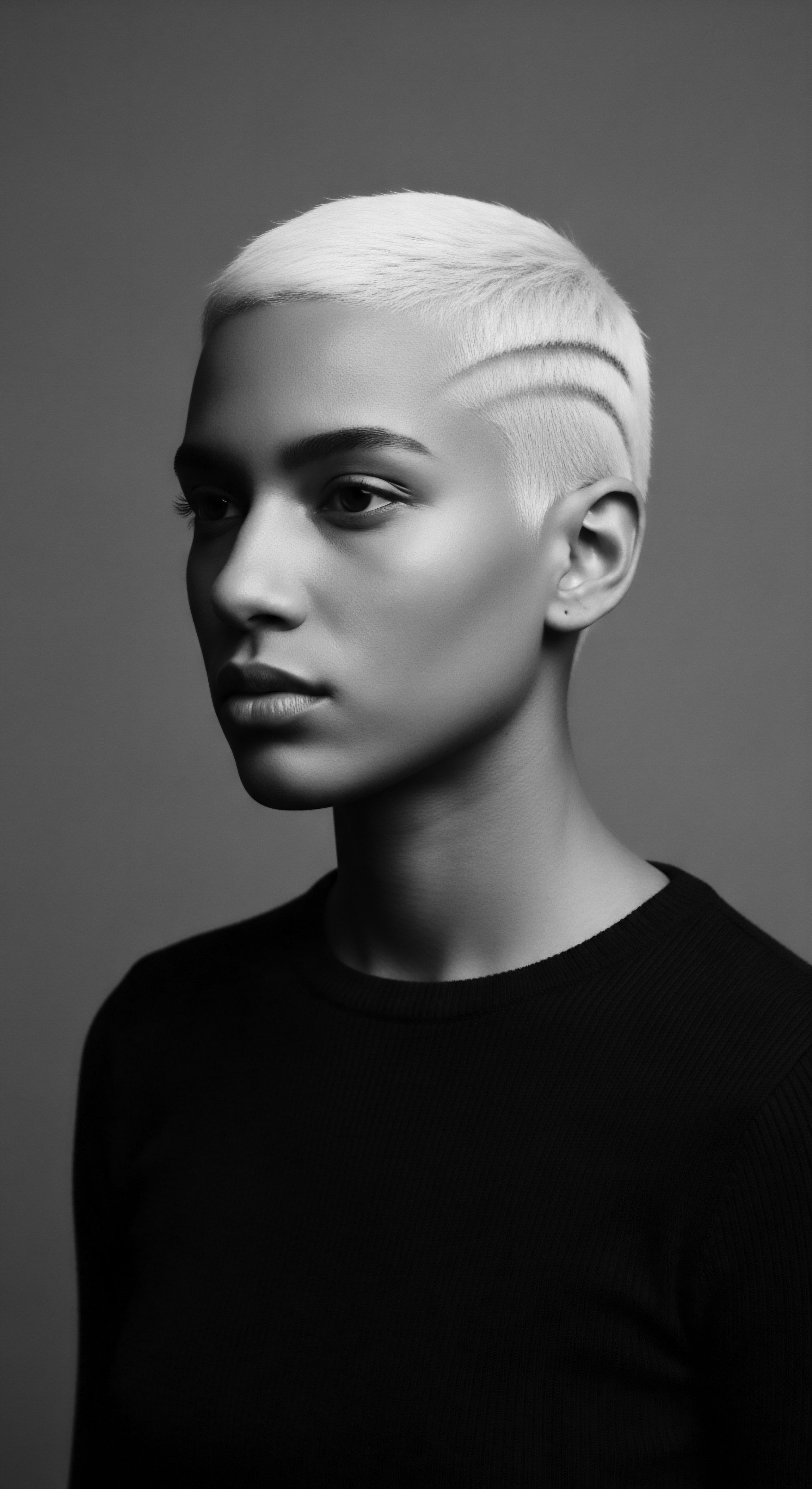
Roots
From the very soil of Kemet, where the mighty Nile River breathed life into a civilization, lies a heritage deeply interwoven with adornment and self-expression. For those of us with textured hair, a lineage of coils, curls, and waves echoing ancestral landscapes, the practices of ancient Egyptians offer a profound mirror. Their approach to personal care was not merely about outward show; it was a sacred pact with one’s body, a reflection of health, status, and a connection to the divine. The inquiry into how these ancients oiled their textured hair extends beyond a simple historical curiosity; it is an invitation to understand a shared legacy, a continuity of care that speaks to the enduring vitality of our strands.
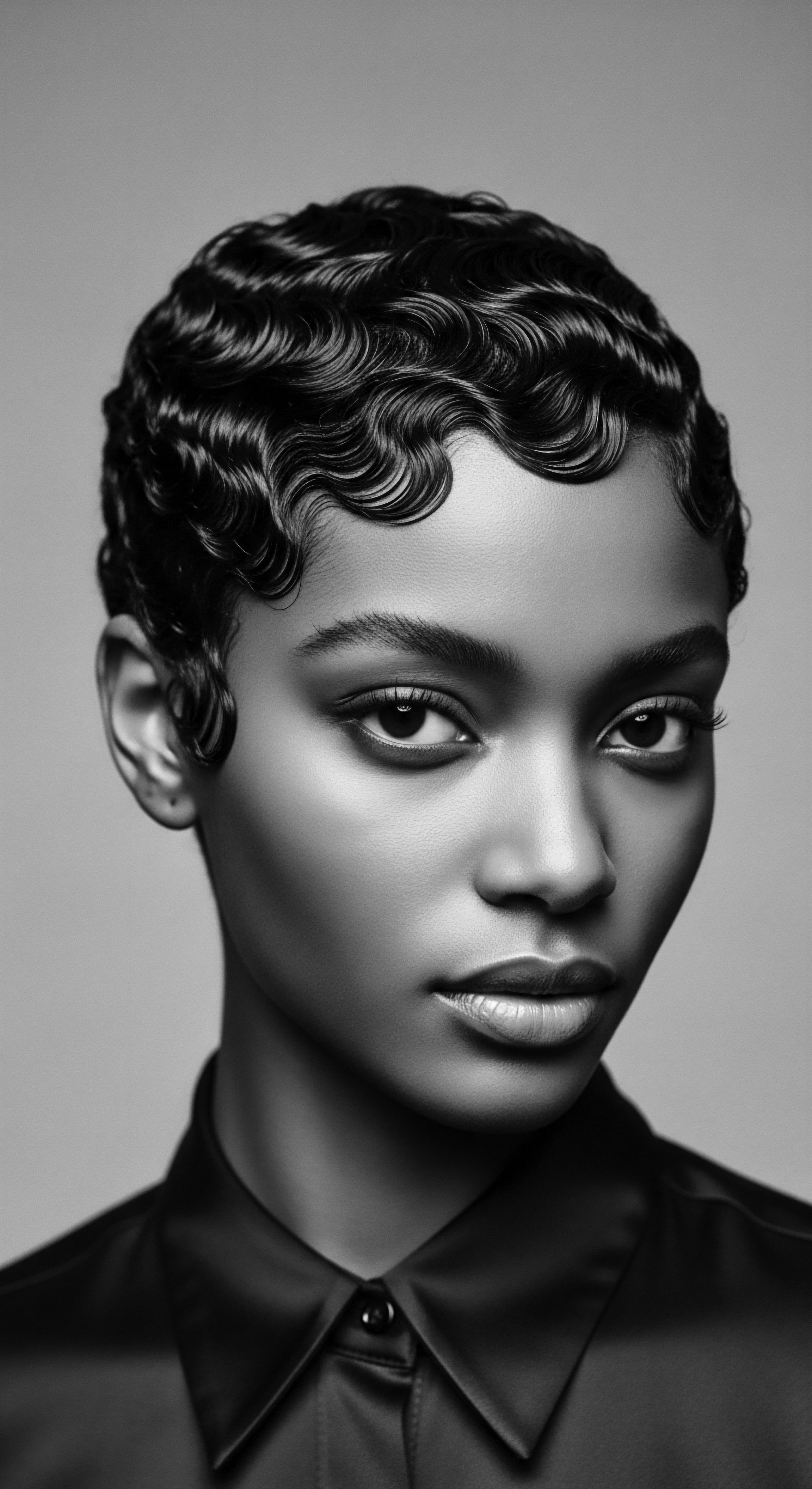
Ancient Hair Anatomy and Ancestral Wisdom
The intrinsic architecture of textured hair, with its unique follicle shape and elliptical cross-section, often leads to a natural propensity for dryness compared to straight strands. This structural reality makes moisture retention a central act of care. The arid climate of ancient Egypt, with its relentless sun and ever-present sands, would have posed significant challenges for hair health, particularly for those with hair types that naturally seek hydration. It is within this environmental context that the wisdom of ancient Egyptian hair oiling truly blossoms, an ancestral knowledge system attuned to the very needs of the hair fiber.
Archaeological findings and ancient texts, like fragments of wisdom passed down through generations, reveal a deep understanding of natural emollients. These fatty substances were not just casual applications; they were foundational to hair care, a practice that likely predates formal documentation. This practice was not confined to a single social stratum. Evidence suggests that individuals of all genders and classes utilized these preparations, highlighting a universal value placed on hair well-being.
Ancient Egyptian hair care practices provide a profound connection to the enduring heritage of textured hair, illustrating an ancestral understanding of moisture and protection.
The term “textured hair” encompasses a spectrum of patterns, from loose waves to tightly wound coils, each with distinct needs for moisture and conditioning. In ancient Egypt, the diverse population included individuals whose hair manifested these varied textures, mirroring the spectrum of hair types found across Africa and its diaspora. While specific detailed classifications as we know them today did not exist, the visual representations in art, from tomb paintings to sculpted reliefs, depict a variety of hairstyles, many of which strongly suggest naturally curly or coily hair, often styled into intricate braids and extensions. This visual archive affirms the presence of diverse hair textures within the society.
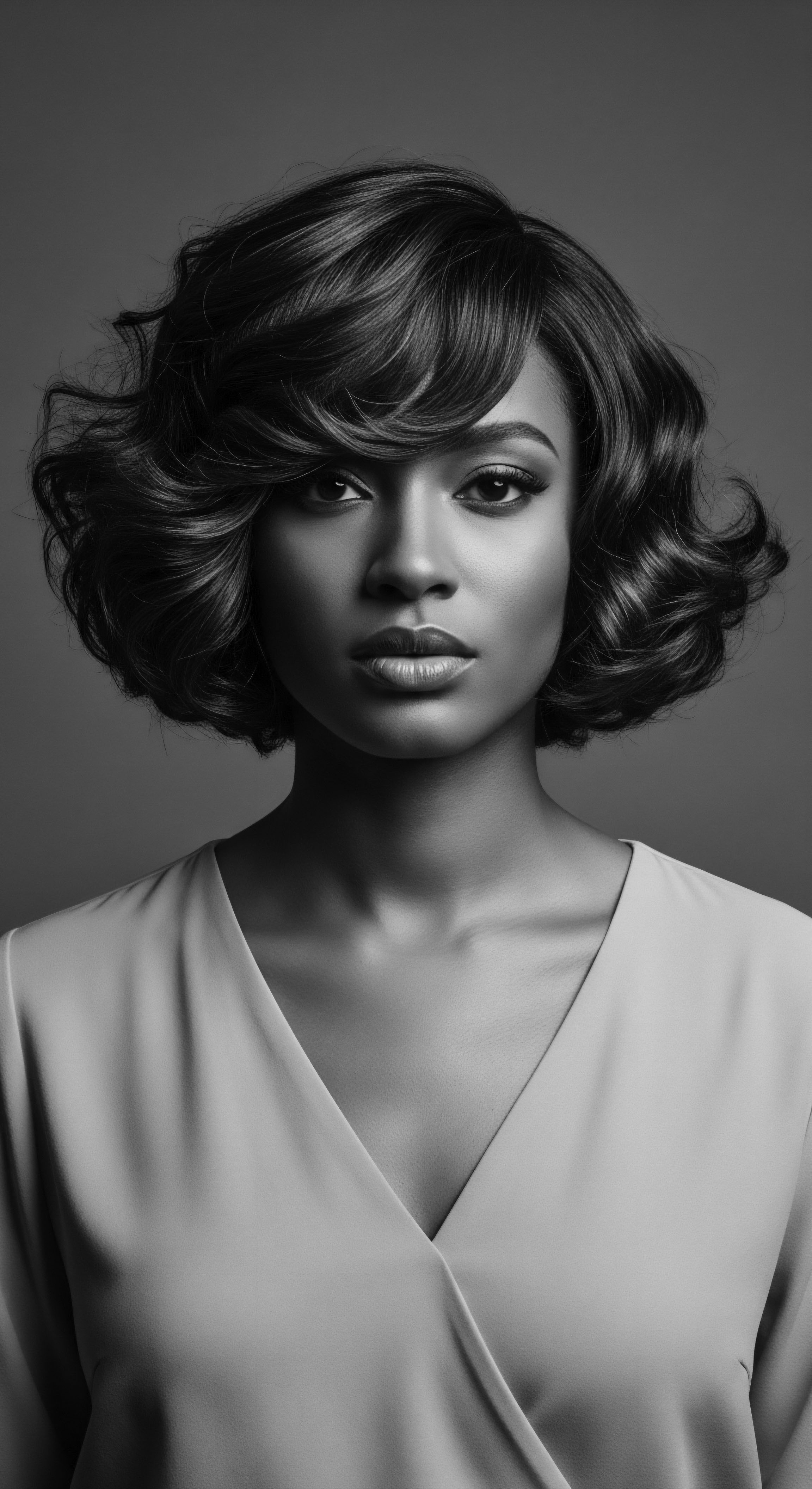
What Did Ancient Egyptians Know About Hair Structure?
While ancient Egyptians lacked modern microscopy and chemical analysis, their observational knowledge of hair was undeniably sophisticated. They understood that certain substances offered protection from the harsh elements, provided sheen, and improved manageability. This empirical understanding, refined over millennia, served as their foundation for hair care.
Their “science” was one born of direct experience and adaptation, a testament to keen observation and the trial-and-error passed down through families. It was an intuitive grasp of what the hair needed to thrive in its environment.
The substances they applied were rich in lipids, which would have coated the hair shaft, mimicking and augmenting the natural sebum that is often less effective in traveling down the length of textured hair. This external lipid layer would have served a dual purpose ❉ providing lubrication, thus reducing friction and tangles, and sealing moisture into the hair, protecting it from the arid desert air. The simple act of applying these fats was, in essence, an ancient form of deep conditioning, an echo of practices still vital for textured hair today.

Ritual
The application of oils to hair in ancient Egypt transcended mere grooming; it was a ritual, a deliberate act of care woven into daily life and sacred practices. These rituals speak volumes about the reverence for personal presentation and physical well-being, both in life and as preparation for the afterlife. The techniques involved were likely hands-on, deeply personal, and communal, performed within families or by skilled hairdressers who understood the nuances of preparing and adorning hair.

What Oils Did Ancient Egyptians Use on Hair?
The ancient Egyptians employed a repertoire of natural oils and fatty substances derived from their environment. These selections were not arbitrary; they reflected the availability of local flora and, for the elite, traded goods. Central to their cosmetic arsenal were oils known for their conditioning and protective properties.
- Castor Oil ❉ A staple in ancient Egyptian hair care, this thick oil was valued for its moisturizing capabilities and its perceived role in hair growth and strength. Its presence has been identified in archaeological contexts.
- Almond Oil ❉ Prized for its ability to smooth and soften hair, almond oil also provided essential hydration, helping to combat the desert’s drying effects.
- Moringa Oil ❉ Known as the “miracle oil,” moringa was a lightweight oil rich in antioxidants. It supported scalp health and hair growth.
- Sesame Oil ❉ This oil was another source of nourishment, offering protection against the harsh environment.
- Animal Fats ❉ Beyond plant-based oils, animal fats such as ox, sheep, and fowl fat were also utilized as emollients for hair.
- Beeswax ❉ Often blended with oils and fats, beeswax served as a fixative, helping to set and maintain intricate hairstyles, especially for wigs and elaborate coiffures.
These ingredients were often combined to create more complex unguents and pomades, sometimes infused with aromatic resins for a pleasant scent. The purpose extended beyond aesthetics; these preparations offered a shield against the sun and sand, providing a barrier that protected the hair fiber and scalp. The consistent application of these fatty substances points to an intuitive understanding of the lipid barrier, a concept modern science recognizes as essential for hair health.
A range of plant-based oils and animal fats, often blended with beeswax, formed the core of ancient Egyptian hair conditioning practices, offering protection and promoting hair health.

Were Wigs Central to Hair Oiling Practices?
The prevalence of wigs in ancient Egypt, worn by men, women, and children across social strata, is a significant aspect of their hair heritage. These wigs, crafted from human hair, plant fibers, or even wool, were meticulously cared for using the same emollients and oils applied to natural hair. The oiling of wigs served a similar purpose to oiling natural hair ❉ to maintain their appearance, add sheen, and ensure their longevity.
Indeed, archaeological analysis of mummified hair has revealed that a fat-based substance was applied to hair even during the mummification process, preserving hairstyles for the afterlife. This “hair gel,” as some modern scholars refer to it, contained biological long-chain fatty acids, indicating a deliberate application for styling and preservation.
Consider a fascinating case study documented by Natalie McCreesh and her colleagues at the University of Manchester. Their analysis of hair samples from 18 ancient Egyptian mummies, some dating back 3,500 years, revealed a consistent application of a fat-based substance. This “hair gel” composed of biological long-chain fatty acids (including palmitic and stearic acid), was found on nine of the mummies, regardless of whether they were artificially mummified or naturally preserved in the desert sand. (McCreesh, Gize, and David, 2011, p.
3432) This finding suggests that the substance was used as a beauty product in life, serving to set hairstyles, which then carried over into funerary practices to maintain the deceased’s individual appearance for eternity. This direct scientific evidence affirms the widespread use of hair oiling agents for both functional and aesthetic purposes, impacting even the journey beyond life.
| Ancient Ingredient Castor Oil |
| Source and Purpose Derived from castor beans; used for strengthening and hydration. |
| Modern Textured Hair Benefit Deep conditioning, growth promotion, scalp nourishment, particularly for low porosity hair. |
| Ancient Ingredient Almond Oil |
| Source and Purpose Extracted from almonds; softened hair and provided moisture. |
| Modern Textured Hair Benefit Lightweight sealant, adds shine, aids in detangling, useful for all textured hair types. |
| Ancient Ingredient Moringa Oil |
| Source and Purpose From moringa tree seeds; antioxidant-rich, lightweight, nourished scalp. |
| Modern Textured Hair Benefit Supports scalp health, reduces frizz, provides weightless moisture. |
| Ancient Ingredient Animal Fats |
| Source and Purpose Ox, sheep, fowl fat; acted as emollients and fixatives. |
| Modern Textured Hair Benefit Occlusive properties for moisture retention, provides structure and hold (modern equivalents are often plant-based but serve similar function). |
| Ancient Ingredient Beeswax |
| Source and Purpose From bees; used as a setting agent for hairstyles. |
| Modern Textured Hair Benefit Styling hold, environmental protection, adds shine and definition. |
| Ancient Ingredient These ancestral ingredients demonstrate a deep, inherited understanding of hair's needs, echoing in contemporary textured hair care. |

Relay
The legacy of ancient Egyptian hair care extends far beyond their historical epoch, relaying wisdom through centuries and speaking to the persistent needs of textured hair. Understanding their methods allows us to draw lines of continuity from the banks of the Nile to contemporary practices within Black and mixed-race communities, where the thoughtful application of oils remains a cornerstone of care. It is a testament to ancestral ingenuity, a wisdom born of environmental adaptation and a deep respect for the body.

How Does Ancestral Egyptian Oiling Connect to Modern Textured Hair Care?
The core principles of ancient Egyptian hair oiling—moisture retention, protection from elements, and promoting scalp health—resonate profoundly with modern textured hair regimens. Coily and curly hair naturally defies the easy descent of sebum from the scalp along the hair shaft, leaving ends vulnerable to dryness. This inherent characteristic makes external lubrication a necessity. The ancient Egyptians, through empirical observation, arrived at a similar conclusion, developing a system of oil application that directly addressed this physiological reality.
Many traditional hair care practices within the African diaspora mirror these ancient methods. The use of natural oils such as shea butter, coconut oil, and castor oil, which are rich in fatty acids and have occlusive properties, reflects the same principle of sealing in moisture and providing a protective barrier. The prevalence of scalp oiling for growth and soothing, alongside the widespread use of hair grease or pomades, echoes the Egyptians’ application of fat-based substances. These enduring practices are not merely coincidental; they signify a continuous cultural heritage of adapting natural resources for hair wellness across diverse climates and historical periods.
The meticulous preservation of hairstyles on ancient Egyptian mummies, often using fat-based preparations, points to a profound cultural reverence for individual presentation that extended beyond life.
The emphasis on hair as a symbol of identity and status, so evident in ancient Egypt, also finds its modern parallels. Hair is often a statement, a connection to heritage, and a source of pride within Black and mixed-race communities. The adornment of wigs and extensions in ancient Egypt, for both aesthetic and protective reasons, finds a direct echo in the contemporary use of weaves, braids, and extensions. These are not merely fashion choices; they are cultural expressions, protective measures, and links to a rich lineage of hair artistry.

Did Ancient Egyptians Oil Specific Hair Types?
While ancient Egyptian art and preserved remains display a spectrum of hair textures, from naturally straight to highly coiled, the exact methods of oil application for each specific texture are not precisely detailed in surviving texts. However, the nature of the oils and fats discovered suggests a universal applicability for conditioning and protection, which would benefit all hair types, with particular efficacy for textured strands that are more prone to dryness.
For individuals with tightly coiled hair, the lubrication provided by dense oils like castor or animal fats would have dramatically improved manageability, reducing breakage during styling and combing. For wavy or looser curl patterns, lighter oils like almond or moringa could have offered shine and softness without weighing the hair down. The ingenuity lay in their ability to use available resources to address common hair challenges, regardless of the precise curl pattern. The historical evidence suggests a pragmatic and holistic approach to hair health for the entire population.
Consider the insights from research on ancient Egyptian mummification. Chemical analysis has identified stearic acid (18:0) in the hair of mummies, a fatty acid abundant in substances like shea butter. (McCreesh, Gize, and David, 2011, p.
3432) While shea trees are indigenous to sub-Saharan Africa, this finding suggests a potential long-distance trade of valuable cosmetic ingredients or the use of other locally available fats with similar chemical profiles. This underscores a deeper connection between ancient Egyptian practices and broader African traditional cosmetic knowledge.
- Moisture Retention ❉ The primary benefit for textured hair, as oils help seal in water and prevent dehydration in arid climates.
- Scalp Health ❉ Oiling the scalp can soothe dryness, reduce flaking, and create a healthier environment for hair growth.
- Improved Manageability ❉ Lubricated hair is easier to detangle, braid, and style, minimizing mechanical damage.
- Protection ❉ A layer of oil can shield hair from environmental aggressors like sun and wind.
- Shine and Appearance ❉ Oils impart a natural luster, enhancing the visual health and beauty of the hair.
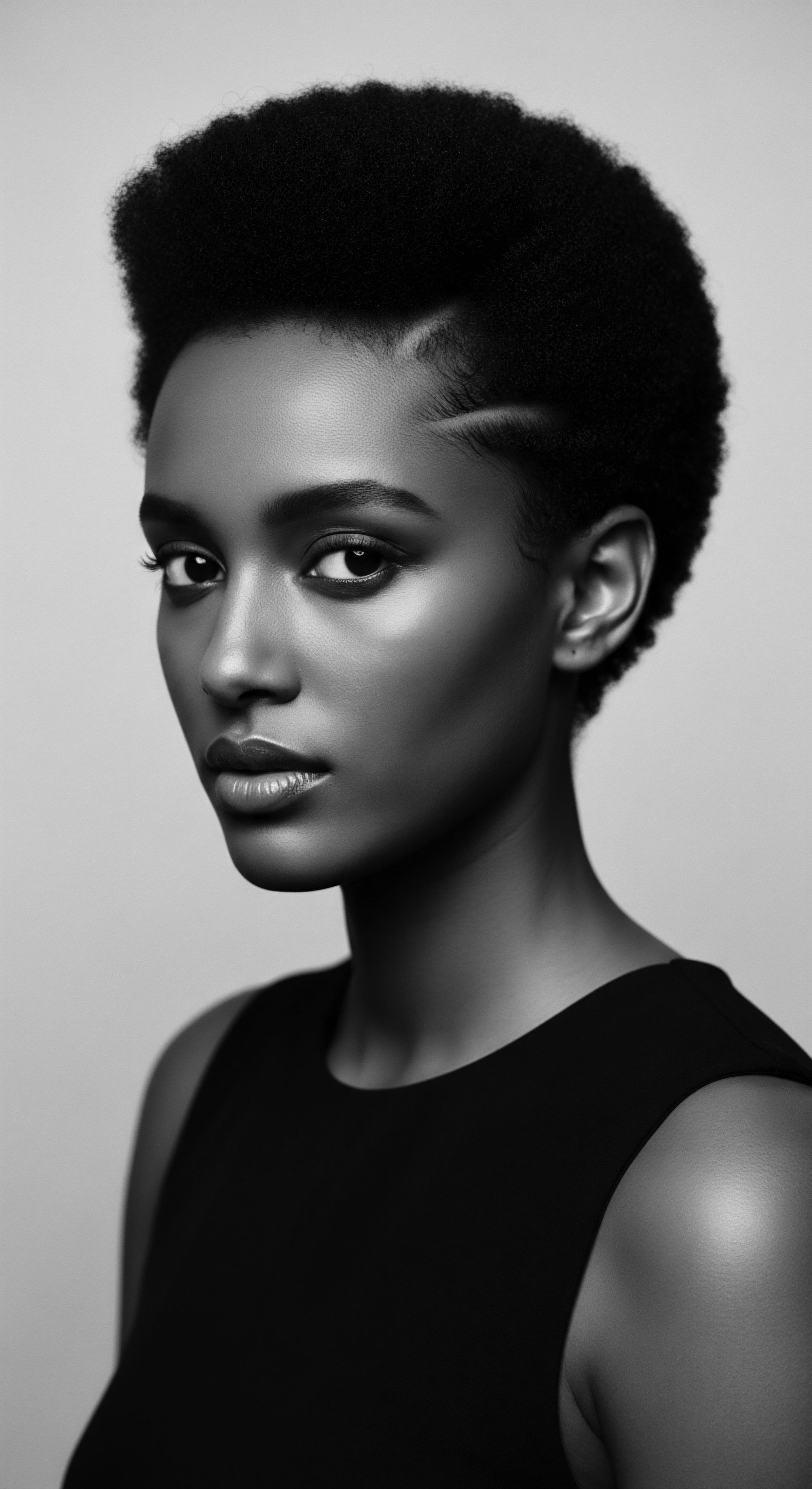
Reflection
The journey through ancient Egyptian hair oiling practices reveals more than just historical facts; it uncovers a vibrant, enduring aspect of textured hair heritage. The whispers from Kemet’s past speak of a profound connection between self-care and identity, a testament to humanity’s innate desire for beauty and well-being. Each coil and curl, then as now, carried stories, status, and the very essence of a person’s journey.
The deliberate application of oils, the crafting of wigs, the ritualistic attention to each strand—these were not superficial acts. They were, instead, a deeply woven part of life, a dialogue between individuals and their environment, their culture, and their spirit.
The wisdom of those ancient hands, blending plant extracts and animal fats, resonates with the ancestral wisdom that still guides textured hair care in communities across the globe. It is a shared memory in the very fabric of our strands, a reminder that what we do for our hair connects us to those who came before. This exploration reaffirms that textured hair, in all its varied splendor, has always been a canvas for expression, a shield against the elements, and a crowning glory.
The echoes of ancient Egyptian hair care remind us that our hair is a living, breathing archive, carrying the soul of a strand across millennia. Our present care practices, steeped in history, are a continuation of that powerful, unbroken lineage.
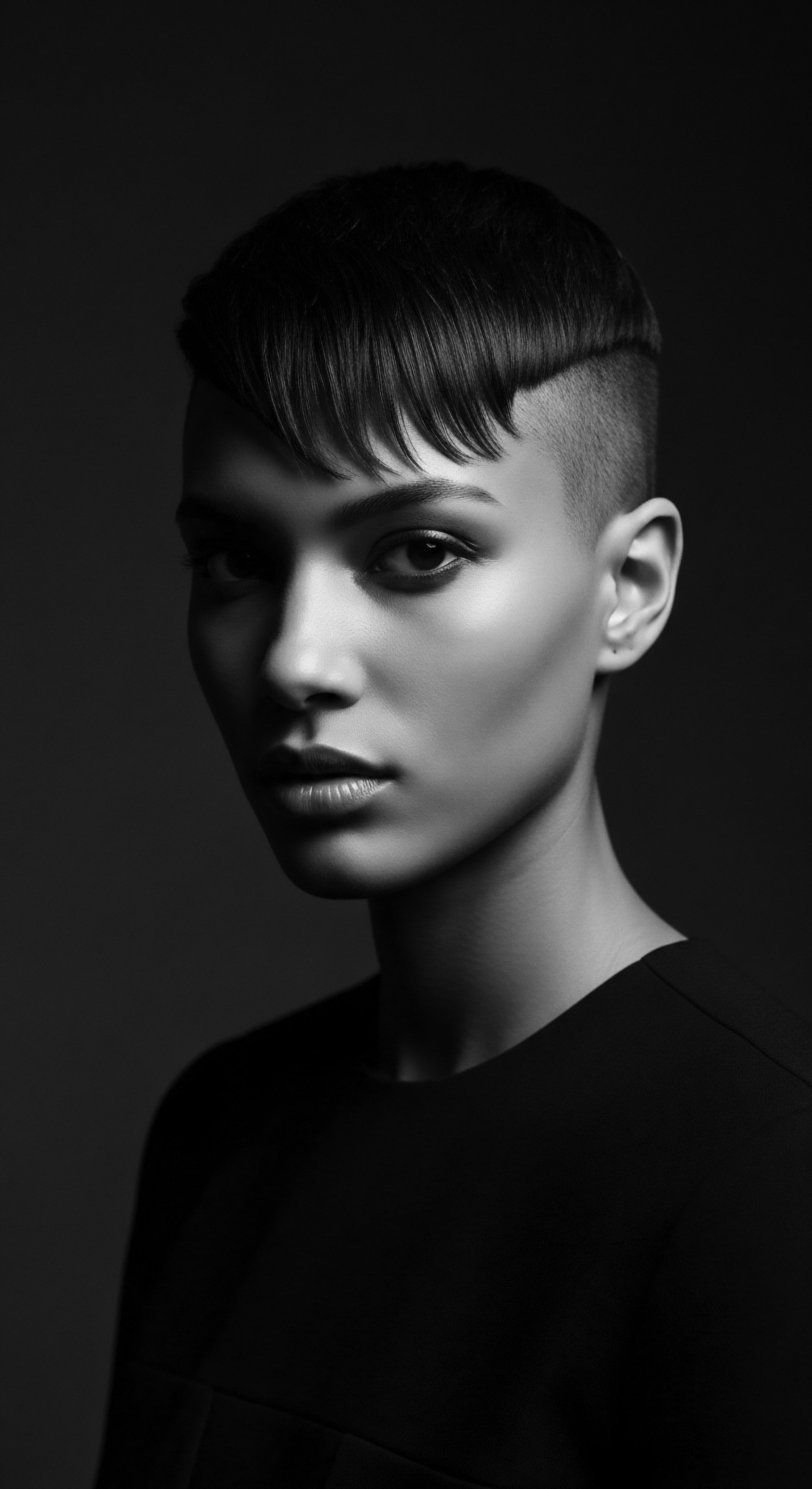
References
- David, A. R. (2008). Egyptian Mummies and Modern Science. Cambridge University Press.
- McCreesh, N. C. Gize, A. P. & David, A. R. (2011). Ancient Egyptian hair gel ❉ New insight into ancient Egyptian mummification procedures through chemical analysis. Journal of Archaeological Science, 38(12), 3432–3434.
- Redford, D. B. (2001). The Oxford Encyclopedia of Ancient Egypt. Oxford University Press.
- Wilkinson, R. H. (1994). Reading Egyptian Art ❉ A Hieroglyphic Guide to Ancient Egyptian Painting and Sculpture. Thames & Hudson.
- Roberts, A. (2017). Hair in Ancient Egypt ❉ A Study of Its Significance and Treatment. UCL Institute of Archaeology. (Doctoral thesis, not a book, but a scholarly work)
- Brewer, D. J. & Teeter, E. (1999). Ancient Egypt ❉ A Very Short Introduction. Oxford University Press.
- Germer, R. (1985). Flora des pharaonischen Ägypten. Philipp von Zabern.
- Manniche, L. (1989). An Ancient Egyptian Herbal. British Museum Publications.
- Nunn, J. F. (1996). Ancient Egyptian Medicine. British Museum Press.
- Lucas, A. & Harris, J. R. (1962). Ancient Egyptian Materials and Industries. Edward Arnold.
